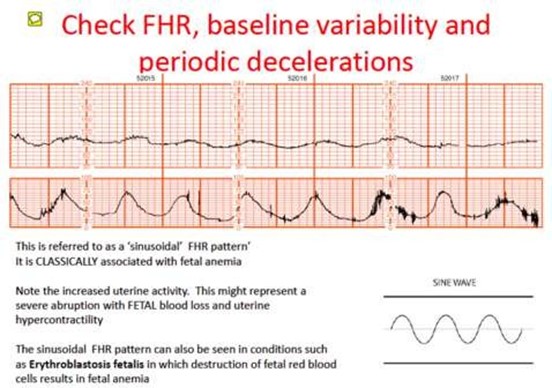A nurse is providing teaching about the expected effects of magnesium sulfate to a client who is at 28 weeks of gestation and has preeclampsia.
Which of the following responses by the nurse is appropriate?
"This medication stabilizes the fetal heart rate."
"This medication improves tissue perfusion."
"This medication prevents seizures."
"This medication increases cardiac output.”
The Correct Answer is C
“This medication prevents seizures.” Magnesium sulfate is a mineral that is given intravenously to women with preeclampsia to reduce the risk of seizures or eclampsia.
Preeclampsia is a condition of high blood pressure and protein in the urine during pregnancy.
Choice A is incorrect because magnesium sulfate does not stabilize the fetal heart rate.
Choice B is incorrect because magnesium sulfate does not improve tissue perfusion.
Choice D is incorrect because magnesium sulfate does not increase cardiac output.
Nursing Test Bank
Naxlex Comprehensive Predictor Exams
Related Questions
Correct Answer is C
Explanation
A nurse assessing the results of a nonstress test for an antepartal client at 35 weeks of gestation should indicate the need for further diagnostic testing if there are no late decelerations noted with three uterine contractions of 60 seconds in duration within a 10-min testing period.

Choice A is incorrect because an increase in fetal heart rate to 150/min above the baseline of 140/min lasting 10 seconds in response to fetal movement within a 40-min testing period is a normal result.
Choice B is incorrect because irregular contractions of 10 to 20 seconds in duration that are not felt by the client do not indicate the need for further diagnostic testing.
Choice D is incorrect because three fetal movements perceived by the client in a 20-min testing period do not indicate the need for further diagnostic testing.
Correct Answer is A
Explanation
A bedside glucometer reading of 65 mg/dL is within the normal range for a newborn who is 6 hours old.
Feeding the newborn can help maintain their blood glucose level.

Choice B is not an answer because administering 50 mL of dextrose solution IV is not necessary for a newborn with a normal blood glucose level.
Choice C is not an answer because reassessing the blood glucose level prior to the next feeding is not necessary for a newborn with a normal blood glucose level.
Choice D is not an answer because obtaining a blood sample for a serum glucose
level is not necessary for a newborn with a normal blood glucose level.
Whether you are a student looking to ace your exams or a practicing nurse seeking to enhance your expertise , our nursing education contents will empower you with the confidence and competence to make a difference in the lives of patients and become a respected leader in the healthcare field.
Visit Naxlex, invest in your future and unlock endless possibilities with our unparalleled nursing education contents today
Report Wrong Answer on the Current Question
Do you disagree with the answer? If yes, what is your expected answer? Explain.
Kindly be descriptive with the issue you are facing.
